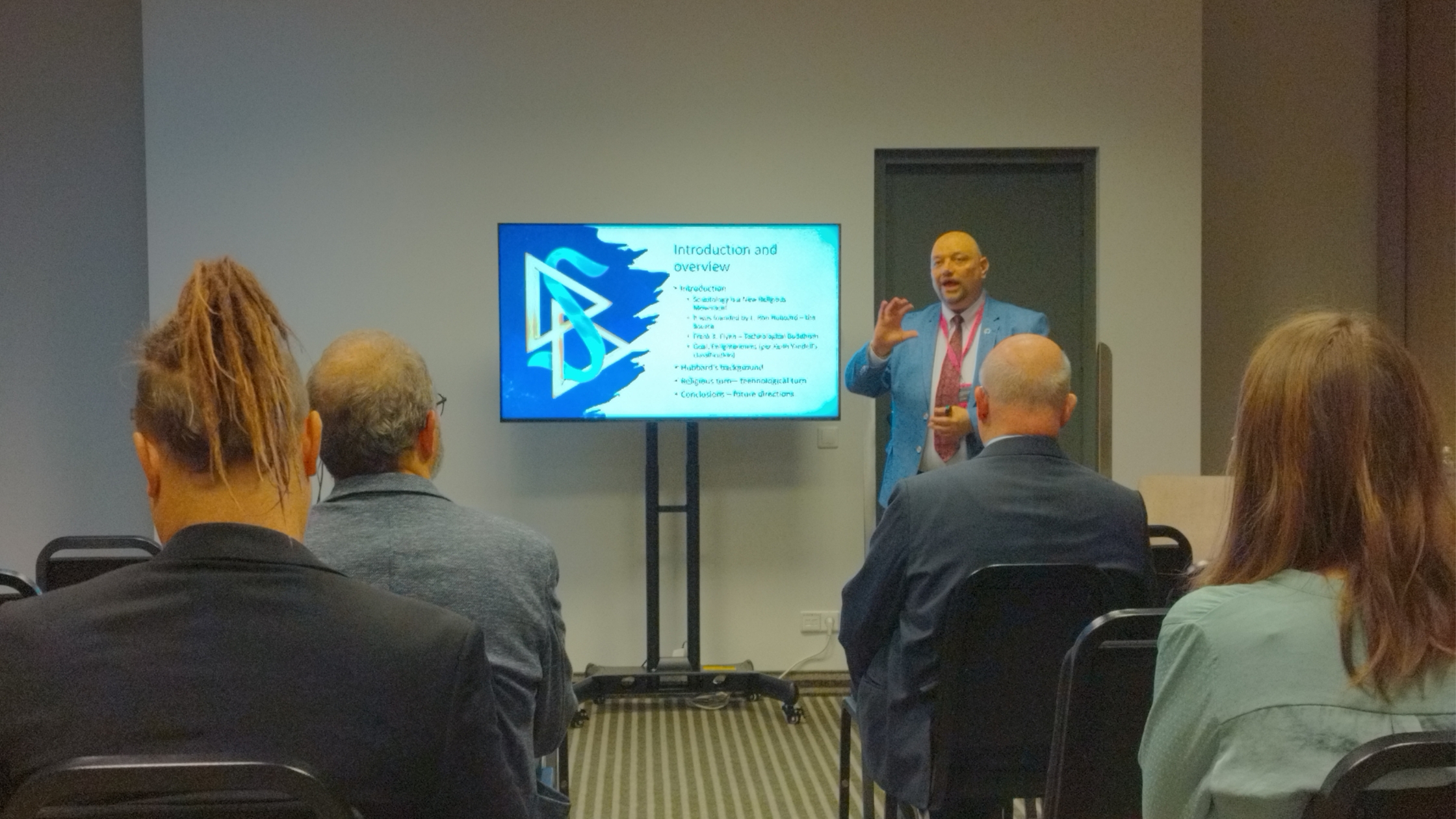VILNIUS, LITHUANIA, September 7, 2023/EINPresswire.com/ — In today’s ever-evolving landscape of religion and technology, the traditional notion of conflict between the two is being challenged by a more nuanced perspective, and Scientology, according to scholars, shows to be a definite example of this. How is the relationship between religion and technology?
Among the many conferences that are being held this week in Vilnius with over 400 presentations by experts from all over Europe and around the world, there was one panel with a focus on Scientology as an intriguing case study. This exploration took place within the context of the 20th Annual Conference of the European Association for the Study of Religions (EASR) which was hosted by both the Lithuanian Society for the Study of Religion and Vilnius University, where experts discussed and challenged each other about how religion, technology and society intersect.
The Framework of the EASR Conference
The EASR Conference held in 2023 played a role as a platform for scholars interested in aspects concerning religion and technology. Organized jointly by both the Lithuanian Society for the Study of Religion and Vilnius University this conference aimed to shed light on an overlooked theme – exploring how religion intersects with technology. It called for research not only into historical interactions but also, into our rapidly changing modern world where religions and religious movements have seamlessly integrated themselves into the technological and digital spaces.
“In this era, the beliefs and practices of religions have an impact, on public opinion and must therefore be properly understood, so that this impact is a positive one”, said Ivan Arjona, Scientology representative to the European institutions and the United Nations who that the opportunity to participate in this annual conference “and therefore this type conference deserves the attention and support of the authorities as well as all the academia”.
The Unique Intersection of Scientology
Among the circa 100 panels with around 400 presentations, there was a panel discussion specifically focused on “Religion as Technology and Technology as Religion; Scientology.” Experts came together to analyze the position that Scientology holds within this relationship.
This panel was convened by Prof Massimo Introvigne, founder of the renowned Center for Studies on New Religions, who plays a pivotal role in examining new religions and who has researched and written extensively on Scientology.
The first presenter was Attila Miklovicz, a PhD student specializing in philosophy of religion studies and the University of Pécs, Hungary, who provided insights into how Scientology’s connection to technology goes beyond academia and resonates with the public. He highlighted how Scientology has evolved from its initially not viewed as religious methodology, Dianetics, to growing into a recognized religion, with philosophical and technological aspects. Miklovicz explained and demonstrated how Scientology founder L. Ron Hubbard, through the application of scientific and engineering approaches to life and philosophy, the Dianetics methodology transformed into what experts, including the late Frank Flinn, call a technological religion.
The panel featured a diverse group of experts, each offering a unique perspective on the intersection of Scientology, religion, and technology, and among them was Prof Donald Westbrook, who has taught at prestigious institutions like UT Austin and UCLA, and who holds a PhD from Claremont Graduate University and MLIS from San Jose State University. And another expert who provided an approach was Rosita Soryte, the co-founder and President of ORLIR (the International Observatory of Religious Liberty of Refugees), who brought a unique perspective to the panel from her background in international relations.
In conclusion, the 20th Annual Conference of the European Association for the Study of Religions provided a platform for scholars to delve into the relationship, between religion and technology. “As we navigate through the changing landscape of religion and technology it becomes clear that the line separating these two realms is not fixed but rather flexible. The example of Scientology provides a captivating demonstration of it. The EASR conferences have always been extremely useful in bringing knowledge about religion to all through its members all over the continent “we congratulate them for this”, concluded Arjona.












